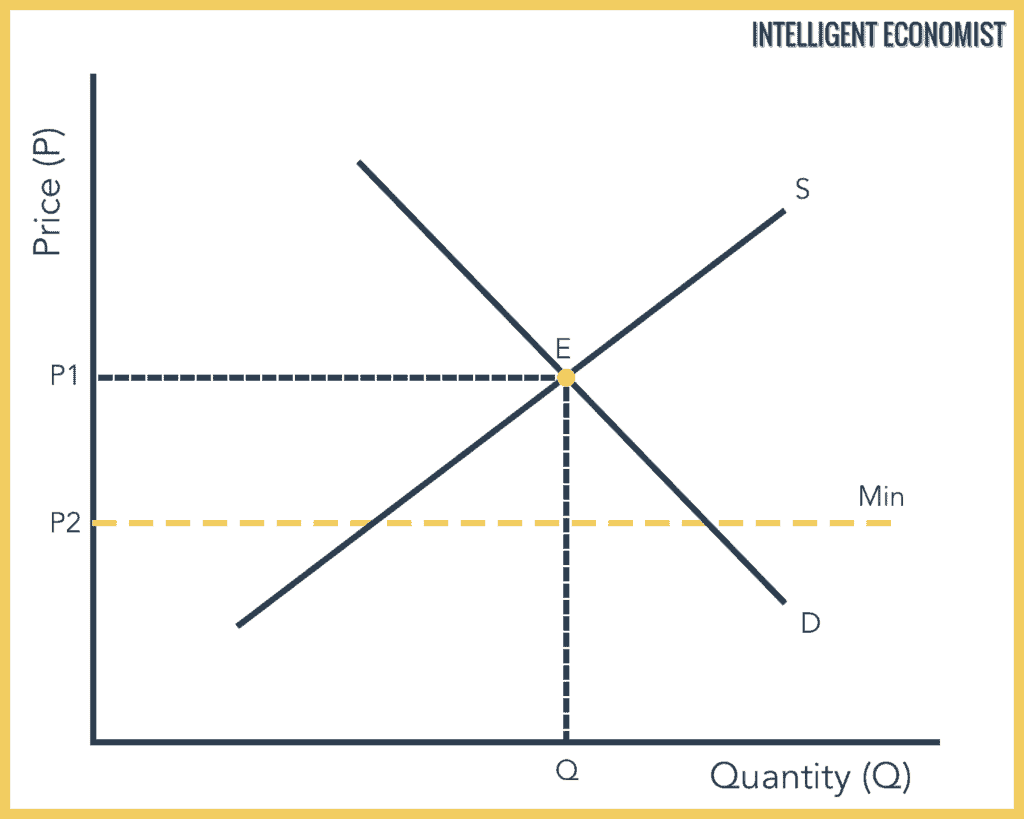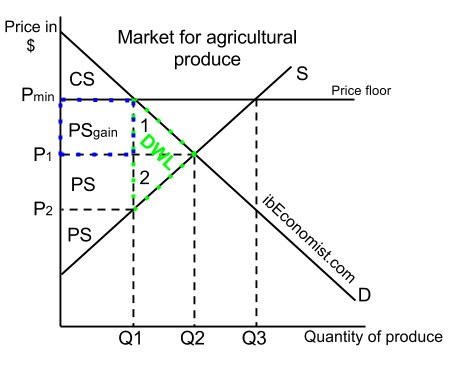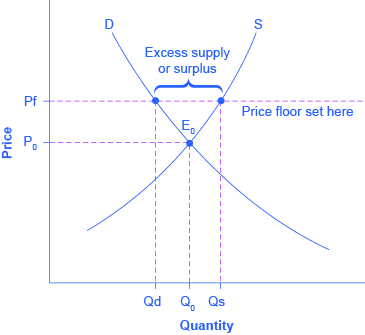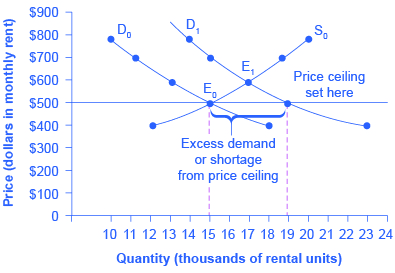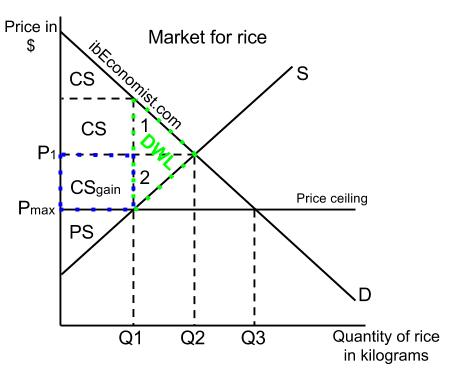Consequences Of Price Floor

Price and quantity controls.
Consequences of price floor. How price controls reallocate surplus. In the 1970s the u s. Effect of price floor. Example breaking down tax incidence.
Price floor is enforced with an only intention of assisting producers. When the price is above the equilibrium the quantity supplied will be greater than the quantity demanded and there will be a surplus. The effect of government interventions on surplus. The most common price floor is the minimum wage the minimum price that can be payed for labor.
Taxation and dead weight loss. A price floor is a government or group imposed price control or limit on how low a price can be charged for a product good commodity or service. When society or the government feels that the price of a commodity is too low policymakers impose a price floor establishing a minimum price above the market equilibrium. The equilibrium price commonly called the market price is the price where economic forces such as supply and demand are balanced and in the absence of external.
A price floor must be higher than the equilibrium price in order to be effective. For example the uk government set the price floor in the labor market for workers above the age of 25 at 7 83 per hour and for workers between the ages of 21 and 24 at 7 38 per hour. Effects of a price floor. Minimum wage and price floors.
Implementing a price floor. This is the currently selected item. The price floors are established through minimum wage laws which set a lower limit for wages. Price floors are used by the government to prevent prices from being too low.
Price floors prevent a price from falling below a certain level. Price floors usually have the following consequences on goods and services where the minimum price is higher than the equilibrium price or market clearing price. A price floor is the lowest legal price a commodity can be sold at. However price floor has some adverse effects on the market.
Government set price floor when it believes that the producers are receiving unfair amount. It may help farmers or the few workers that get to work for minimum wage but it does not always help everyone else. If the market was efficient prior to the introduction of a price floor price floors can cause a deadweight. Government enforce price floor to oblige consumer to pay certain minimum amount to the producers.
A persistent surplus excess supply develops. In the end even with good intentions a price floor can hurt society more than it helps. Price floors are also used often in agriculture to try to protect farmers. The opposite of a price ceiling is a price floor which sets a minimum price at which a product or service can be sold.
Price floors and price ceilings often lead to unintended consequences. When a price floor is set above the equilibrium price quantity supplied will exceed quantity demanded and excess supply or surpluses will result.



